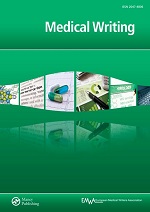
Abstract
Abstracts are perhaps the most important part of a manuscript because they are often the only part that is read and used as an information source. They are also used by readers (consciously or not) to decide whether to read the full article, and editors often use the abstract to determine whether they will send out a manuscript for peer review. The abstract therefore serves not only as an essential information source but also as an advertisement for your manuscript and for you and the other authors.
This is the first of two articles that shows you how to shorten your abstract. This first article describes how to shorten abstracts by eliminating unnecessary content and using plain language. The second article will describe how to use linguistic devices to reduce the word count. The accent of these two articles is on preparing informational and descriptive abstracts for publications, but these considerations also apply to conference abstracts.
 Download the full article
Download the full article
References
- Lang TA. How to write, publish, and present in the health sciences: a guide for clinicians and laboratory researchers. Philadelphia: American College of Physicians; 2008.
- Graf J. Handbook of biomedical research: the journal article abstract [document on the internet]. 2008 [cited 2012 May 10] Available from: http://ctl.hanyang.ac.kr/writing
- Blank GK. Wordiness, wordiness, wordiness list [document on the internet]. 2012 [cited 2012 May 10]. Available from: http://web.uvic.ca/~gkblank/wordiness.html
- Ohri M, Dawes K. Successful abstract writing: an essential skill for medical writers. Write Stuff 2009;18(1):27–8.
Search
Articles
Links
Editoral Board
Editor-in-Chief
Co-Editors
Managing Editor
Victoria White
Deputy Managing Editor
Alicia Brooks Waltman
Associate Editors
Section Editors
AI/Automation
Biotechnology
Digital Communication
EMWA News
Freelancing
Gained in Translation
Getting Your Foot in the Door
Good Writing Practice
Pablo Izquierdo / Alison McIntosh
In the Bookstores
Publications
Medical Communications/Writing for Patients
Medical Devices
My First Medical Writing
News from the EMA
Pharmacovigilance
Regulatory Matters
Regulatory Public Disclosure
Louisa Ludwig-Begall / Sarah Kabani
The Crofter: Sustainable Communications
Veterinary Writing
Editors Emeritus
Layout Designer
Chris Monk
 Visit the EMWA website
Visit the EMWA website